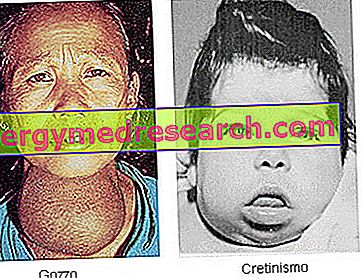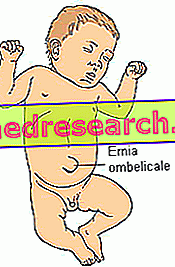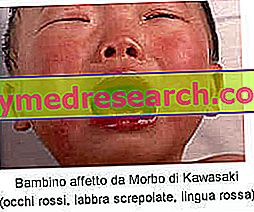Generality The homogenized are foods of a promiscuous consistency between solid and liquid, used above all for infant weaning; They do NOT require chewing, therefore, more generally, they are very useful in the case of incomplete dental structuring. The homogenized therefore represent the food of passage between the liquid feeding of the infant and the solid one of the weaned infant, but they are also used in hospital and geriatric nutrition
Category baby's health
Generality Angioma of the newborn is a benign vascular tumor that occurs in some children. Also known by the common name of " birthmark ", the angioma of the newborn appears as a patch of red with indefinite contours and variable dimensions. In most cases, this benign formation tends to regress spontaneously within a few years, without causing problems
Generality Cystitis in children is an inflammatory disorder that can occur in both very young children and school-age children. This disorder is characterized by inflammation of the bladder wall, generally due to a bacterial infection. The main bacteria responsible for cystitis in children is Escherichia coli
Definition of cretinism The term "cretinism" identifies a pathology caused by the considerable lack of thyroid hormones, generated, in turn, by the complete absence of the thyroid gland (gland located below the Adam's apple) or by a functional deficit of the same, which makes it unable to synthesize the aforementioned hormones: Thyroxine (T4) and Triiodothyronine (T3)
Generality Diarrhea in the newborn is a disorder that consists of the emission of liquid or semi-liquid faeces by children aged 28 days or less (newborns); in common parlance, older children (eg up to 1 year of age) tend to be considered newborns. In these early stages of life, diarrhea can be caused by a viral, bacterial or parasitic infection, a food allergy, the ingestion of a toxic substance, excessive consumption of fruit juices, otitis, from the misuse of antibiotics etc
Definition of umbilical hernia The umbilical hernia is a bulge towards the outside of the abdominal lining - or a part of the organ contained in the cavity of the abdomen - through the navel. The umbilical hernia is a rather frequent condition in the newborn and in the small child, fruit of a defect of closing of the abdominal wall after the fall of the umbilical cord
Key points The umbilical hernia is a protrusion of the abdominal lining - or of a part of an abdominal organ - through the navel. This is a particularly frequent condition in infants and young children, particularly of African ethnicity; adults and the elderly can also be affected. Classification There are more variants of umbilical hernia: EMBRYON ERNIA: often incompatible with the life of the unborn child FETAL ERNIA: appears after the third month of gestational life CHILD ERNIA OR NEONATAL: the most common of all
Scroll down the page to read the summary table on Kawasaki's disease Kawasaki disease Febrile vasculitis with an acute course typical of infants up to the age of 4: autoimmune disease that affects the arteries of small and medium size Kawasaki disease: etymology of the term The term "Kawasaki disease" comes from its discoverer: around 1960, Dr
Definition Among the diseases of possible infectious etiology, Kawasaki disease stands out: it is a febrile vasculitis with an acute course, typical of infants up to the age of four. As we know, vasculitis is an inflammation of the blood vessels, including therefore the arteries; more precisely, Kawasaki disease is an autoimmune disease that affects small and medium-sized arteries
Key points The infalite is a chronic inflammation of the navel, from which an abundant purulent and malodorous secretion emerges. Ophthalitis: causes The CAUSE of hyaluritis lies in polymicrobial infections. The most involved pathogens are: Staphylococcus aureus , Streptococcus pyogenes, Escherichia coli, Klebsiella pneumoniae and Proteus mirabilis










